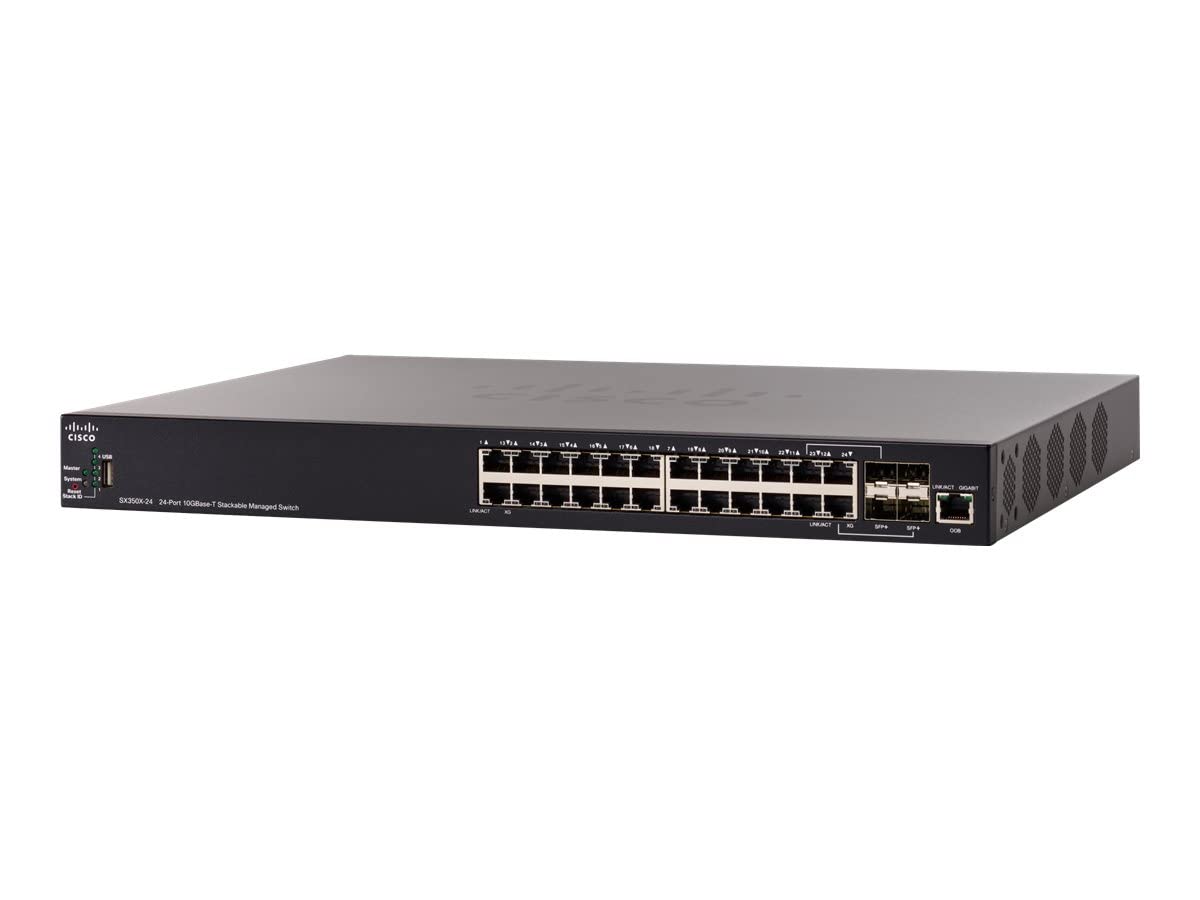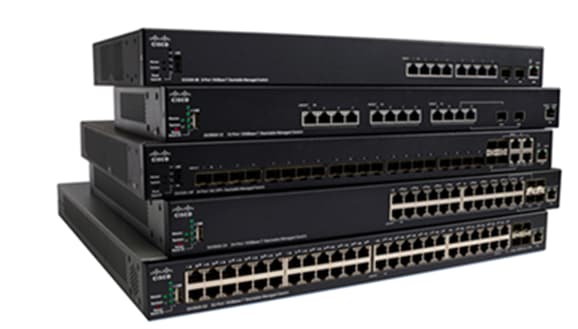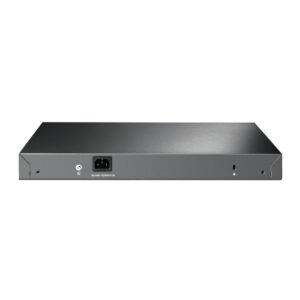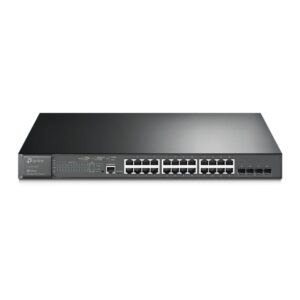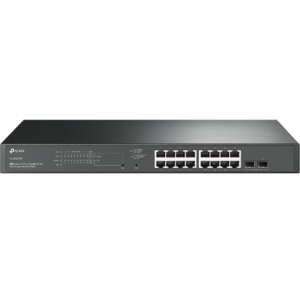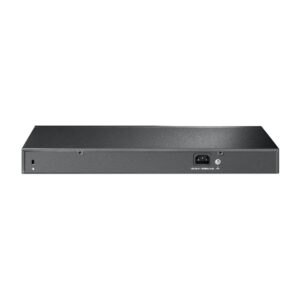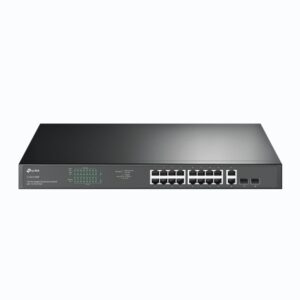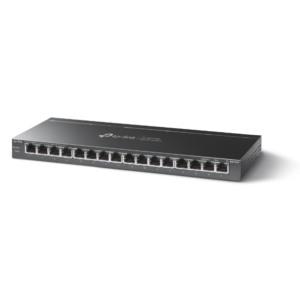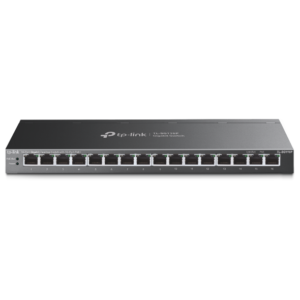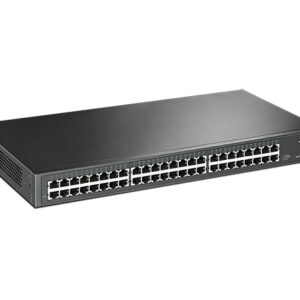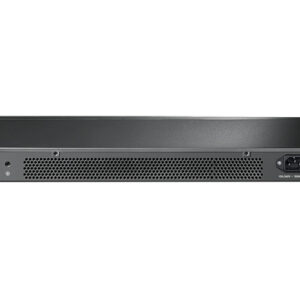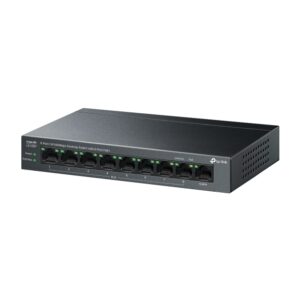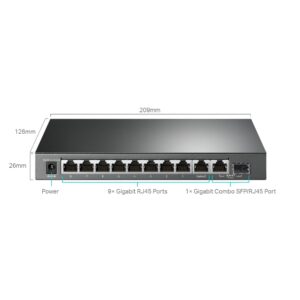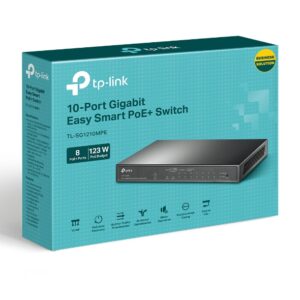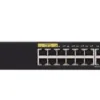The SX350X-24-K9 is a high-performance 24-Port 10-Gigabit Layer 3 Managed Network Switch designed to support demanding business and data center environments. With 24 × 10GBase-T ports and 4 × 10G SFP+ uplinks, it provides scalable, high-speed connectivity for growing networks.
This switch is suitable for core aggregation, top-of-rack deployment, or high-performance distribution layers. With Layer 3 routing capabilities, the SX350X-24-K9 offers static routing, VLAN segmentation, access control, QoS prioritization, and advanced traffic control for complex networks.
Its compact rackmount design, intuitive web interface, and support for auto-configuration protocols make it suitable for IT professionals managing multi-segment business networks.
Cisco 350X Series Stackable Managed Switches
The Cisco 350X Series Stackable Managed Switches (Figure 1) are a new line of stackable managed Ethernet switches that provide the rich capabilities you need to support a more demanding network environment at a very affordable price. The SG350X models provide 8 to 48 ports of Gigabit and Multigigabit Ethernet connectivity with 10 Gigabit Ethernet uplinks. The SX350X models provide 8, 12, 24, or 48 ports of 10 Gigabit Ethernet, providing a solid foundation and more than enough bandwidth for your business applications today and in the future. These switches are easy to deploy and manage without a large IT staff.
Cisco 350X Series Stackable Managed Switches
Cisco 350X Series switches are designed to protect your technology investment as your business grows. Unlike switches that claim to be stackable but have elements that require separate administration and troubleshooting, the Cisco 350X Series provides true stacking capability, allowing you to configure, manage, and troubleshoot multiple physical switches as a single device and more easily expand your network.
A true stack delivers a unified data and control plane, in addition to a management plane, providing flexibility, scalability, and ease of use because the stack of units operates as a single entity. The switches also protect your technology investment with an enhanced warranty, dedicated technical support, and the ability to upgrade equipment in the future. Overall, the Cisco 350X Series provides the ideal technology foundation for a growing business.
Features and benefits
Cisco 350X Series switches provide the advanced feature set that growing businesses and high-bandwidth applications and technologies require. These switches can improve the availability of your critical applications, protect your business information, and optimize your network bandwidth to more effectively deliver information and support applications.
High-performance 10 Gigabit Ethernet
Cisco 350X Series switches break the barrier of 10 Gigabit Ethernet adoption by providing affordable and powerful features for growing small and medium-sized business networks. With the 10G ports in both copper and fiber, you can easily and cost-effectively enable 10G connections to servers and network storage devices with standard RJ-45 Ethernet cables. You can also aggregate 10G Enhanced Small Form-Factor Pluggable (SFP+) fiber connections to build a high-performance backbone to dramatically increase the overall speed of your network.
Multigigabit performance
Network needs are changing quickly. With evolving wireless standards and the rising number of wireless devices, keeping up with data rates and growing traffic can be a challenge. Your traditional Ethernet infrastructure can support speeds of up to 1 Gigabit per second (Gbps), but competing today requires much more capacity. One option is to completely replace your older cabling infrastructure and upgrade your hardware. But wouldn’t it be better to increase network speed and traffic capacity in a way that’s quick, inexpensive, and efficient?
Multigigabit Ethernet technology uses capabilities in your existing cabling infrastructure to meet bandwidth requirements and provide up to five times the performance of a 1G switch. The technology enables intermediate data rates of 2.5 and 5 Gbps to ease the jump from 1 Gbps to 10 Gbps. These intermediate rates run on most installed cables and preserve older Unshielded Twisted Pair (UTP) wiring, which is good for 802.11ac and 802.11ax wireless LAN applications.
The technology also supports Power over Ethernet (PoE), including PoE+ and 60W PoE. Cisco Multigigabit Ethernet switches help you avoid having to run multiple cables between switches and access points and let your networks welcome next-generation traffic speeds and data rates.
Easy configuration and management
Cisco 350X Series switches are designed to be easy to use and easy to manage by small business customers or the partners that serve them.
Smart Network Application (SNA) is an innovative network-level monitoring and management tool embedded in the Cisco 100 to 500 Series switches. It can discover network topology, display link status, monitor events, apply configurations, and upgrade software images across multiple switches in the network.
The FindIT Network Manager and Probe are designed to manage Cisco 100 to 500 Series switches, routers, and wireless access points. They let you proactively manage the network instead of just reacting to events. Cisco 350X Series switches support the embedded FindIT Network Probe, eliminating the need to set up a separate hardware or virtual machine on site.
The FindIT Network Discovery Utility works through a simple toolbar on the user’s web browser to discover Cisco devices on the network and display basic device information, inventory, and new firmware updates to aid in the configuration and speed the deployment of Cisco Small Business products.
Simple or advanced-mode Graphical User Interfaces (GUIs) reduce the time required to deploy, troubleshoot, and manage the network. Configuration wizards simplify the most c
ommon configuration tasks and provide the ultimate tool for anyone to set up and manage the network.
Cisco Smartports technology provides more advanced capabilities and hands-on control by automatically configuring ports with specific levels of security, Quality of Service (QoS), and availability according to the type of connected device, based on Cisco best practices and pretested configurations. The Auto Smartports feature automatically applies the intelligence delivered through the Smartports roles to the port based on the device types discovered over Cisco Discovery Protocol or Link Layer Discovery Protocol Media Endpoint Discovery (LLDP-MED). This capability facilitates zero-touch deployments.
The USB port on the front panel of the switch enables easy image and configuration transfer for faster deployment or upgrades.
Power over Ethernet Plus (PoE+) and 60W PoE
PoE technology simplifies the deployment of IP phones and wireless access points by allowing you to connect and power network endpoints over a single Ethernet cable, without having to install separate power supplies. The 350X Series switches support 15W PoE and 30W PoE+. The switches also support 60W PoE on selected ports to power compact switches, high-power wireless access points, or connected lighting. The PoE power is intelligently managed such that only the amount of power needed by an endpoint is delivered to it and none is wasted. As a result, the switches can support devices that require more power, such as 802.11ac wireless access points, video-based IP phones, surveillance cameras, and more. The PoE features in the 350X Series switches are also fully backward compatible with 802.3af PoE, 802.3at PoE+, and Cisco legacy PoE protocols.
High reliability and resiliency
In a growing business where availability 24 hours a day, 7 days a week is critical, you need to assure that employees can always access the data and resources they need. In these environments, stackable switches can play an important role in minimizing downtime and improving network resiliency. For example, if the master switch within a Cisco 350X Series stack fails, another switch takes over, keeping your network up and running. You can also replace individual devices in the stack without taking your whole network offline or affecting employee productivity.
Cisco 350X Series switches help optimize your IT operations with built-in features that simplify and streamline day-to-day network operation:
True stacking allows you to troubleshoot, configure, and manage multiple physical switches as a single entity.
True stacking
Some switches claim to support stacking, but they only support “clustering” or “virtual stacking,” which means each switch must still be managed and configured individually. They cannot be managed as a single entity or device. Cisco 350X Series switches provide true horizontal stacking, enabling you to configure, manage, and troubleshoot multiple physical switches as a single device, with a single IP address, for up to four units and up to 208 ports.
This capability can radically reduce complexity in a growing network environment while improving the resiliency and availability of network applications. True stacking also provides other cost savings and administrative benefits through features such as cross-stack QoS, Virtual LANs (VLANs), Link Aggregation Groups (LAGs), and port mirroring, which clustered switches can’t support.
Strong security
Cisco 350X Series switches provide the advanced security features you need to protect your business data and keep unauthorized users off the network:
Embedded Secure Sockets Layer (SSL) encryption protects management data traveling to and from the switch.
Extensive Access Control Lists (ACLs) restrict sensitive portions of the network to keep out unauthorized users and guard against network attacks.
Guest VLANs let you provide Internet connectivity to nonemployee users while isolating critical business services from guest traffic.
Support for advanced network security applications such as IEEE 802.1X port security tightly limits access to specific segments of your network. Web-based authentication provides a consistent interface to authenticate all types of host devices and operating systems, without the complexity of deploying 802.1X clients on each endpoint.
Advanced defense mechanisms, including dynamic Address Resolution Protocol (ARP) inspection, IP Source Guard, and Dynamic Host Configuration Protocol (DHCP) snooping, detect and block deliberate network attacks. Combinations of these protocols are also referred to as IP-MAC Port Binding (IPMB).
IPv6 First Hop Security extends advanced threat protection to IPv6. This comprehensive security suite includes Neighbor Discovery (ND) inspection, Router Advertisement (RA) guard, DHCPv6 guard, and neighbor binding integrity check, providing unparalleled protection against a vast range of address spoofing and man-in-the-middle attacks on IPv6 networks.
Time-based ACLs and port operation restrict access to the network during predesignated times such as business hours.
Uniform MAC address-based security can be applied automatically to mobile users as they roam between wireless access points.
Secure Core Technology (SCT) helps ensure that the switch is able to process management traffic in the face of a Denial-of-Service (DoS) attack.
Private VLAN Edge (PVE) provides Layer 2 isolation between devices on the same VLAN.
Storm control can be applied to broadcast, multicast, and unknown unicast traffic.
Protection of management sessions occurs using RADIUS, TACACS+, and local database authentication as well as secure management sessions over SSL, Secure Shell (SSH), and Simple Network Management Protocol (SNMP) v3.
DoS attack prevention maximizes network uptime in the presence of an attack.
IPv6 support
As the IP address scheme evolves to accommodate a growing number of network devices, the Cisco 350X Series can support the transition to the next generation of networking and operating systems such as Windows 7, Vista, and Linux. These switches continue to support previous-generation IPv4, allowing you to evolve to the new IPv6 standard at your own pace, and helping ensure that your current network will continue to support your business applications in the future. Cisco 350X Series switches have successfully completed rigorous IPv6 testing and have received the USGv6 and IPv6 Gold certification.
Advanced Layer 3 traffic management
The Cisco 350X Series enables a more advanced set of traffic management capabilities to help growing businesses organize their networks more effectively and efficiently. The switches provide static LAN Layer 3 routing, allowing you to segment your network into workgroups and communicate across VLANs without degrading application performance. With these capabilities, you can boost the efficiency of your network by offloading internal traffic-handling tasks from your router and allowing it to manage primarily external traffic and security.
Power efficiency
The Cisco 350X Series integrates a variety of power-saving features across all models, providing the industry’s most extensive energy-efficient switching portfolio. These switches are designed to conserve energy by optimizing power use, which helps protects the environment and reduce your energy costs. They provide an eco-friendly network solution without compromising performance. Cisco 350X Series switches feature:
Using a combination of Cisco Discovery Protocol, LLDP-MED, Auto Smartports, and Voice Services Discovery Protocol (VSDP, a unique Cisco protocol), customers can deploy an end-to-end voice network dynamically. The switches in the network automatically converge around a single voice VLAN and QoS parameters and then propagate them out to the phones on the ports, where they are discovered. For example, automated voice VLAN capabilities let you plug any IP phone (including third-party phones) into your IP telephony network and receive an immediate dial tone. The switch automatically configures the device with the right VLAN and QoS parameters to prioritize voice traffic.
Peace of mind and investment protection
Cisco 350X Series switches offer the reliable performance and peace of mind you expect from a Cisco switch. When you invest in the Cisco 350X Series, you gain the benefit of:
Limited lifetime warranty with Next-Business-Day (NBD) advance replacement (where available; otherwise same day shipping)


